
How to Use DHT22 (Wokwi Compatible): Examples, Pinouts, and Specs
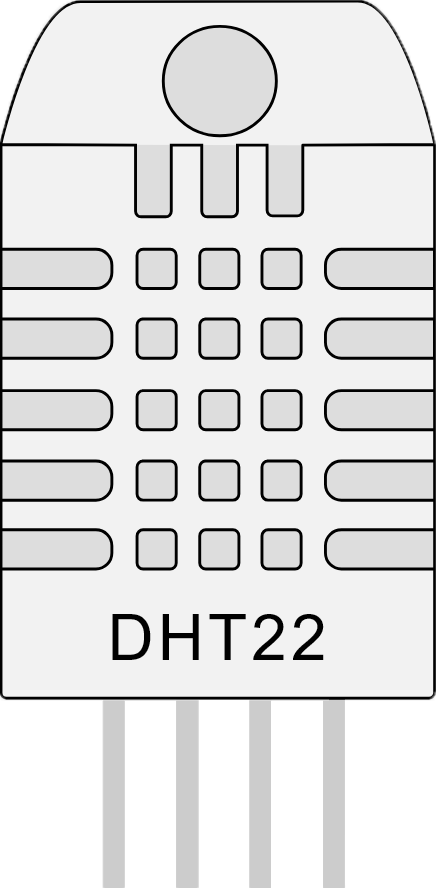
 Design with DHT22 (Wokwi Compatible) in Cirkit Designer
Design with DHT22 (Wokwi Compatible) in Cirkit DesignerIntroduction
The DHT22 is a reliable sensor for measuring temperature and humidity. It is a digital sensor that provides high accuracy and long-term stability, making it suitable for a wide range of applications, including weather stations, home automation systems, and environmental monitoring.
Explore Projects Built with DHT22 (Wokwi Compatible)
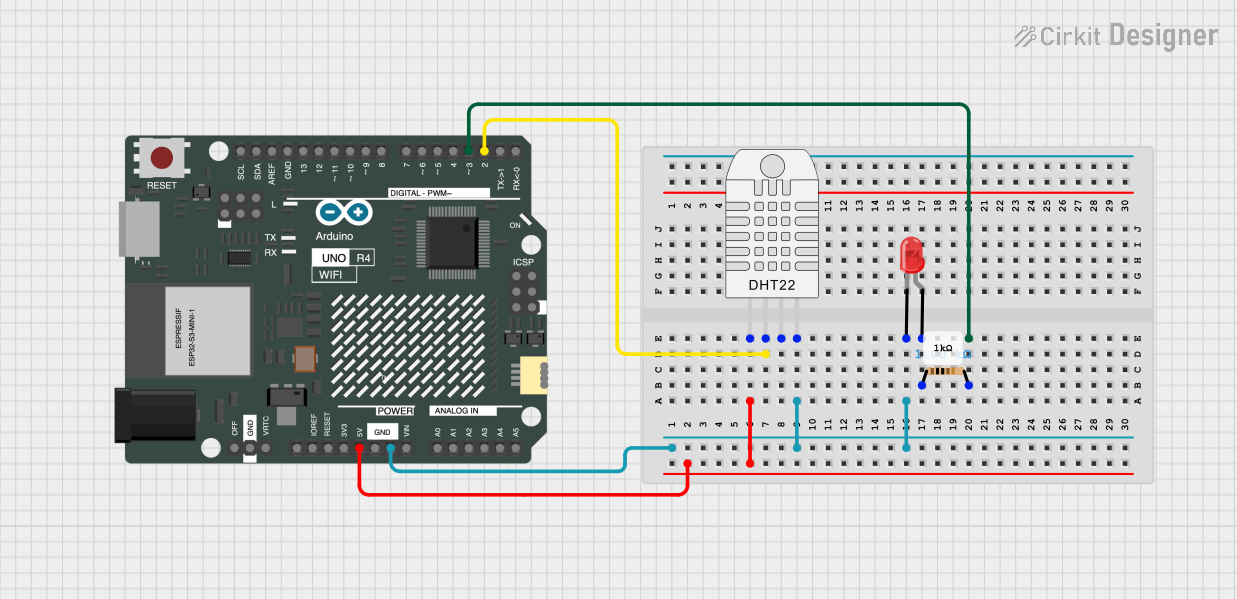
 Open Project in Cirkit Designer
Open Project in Cirkit Designer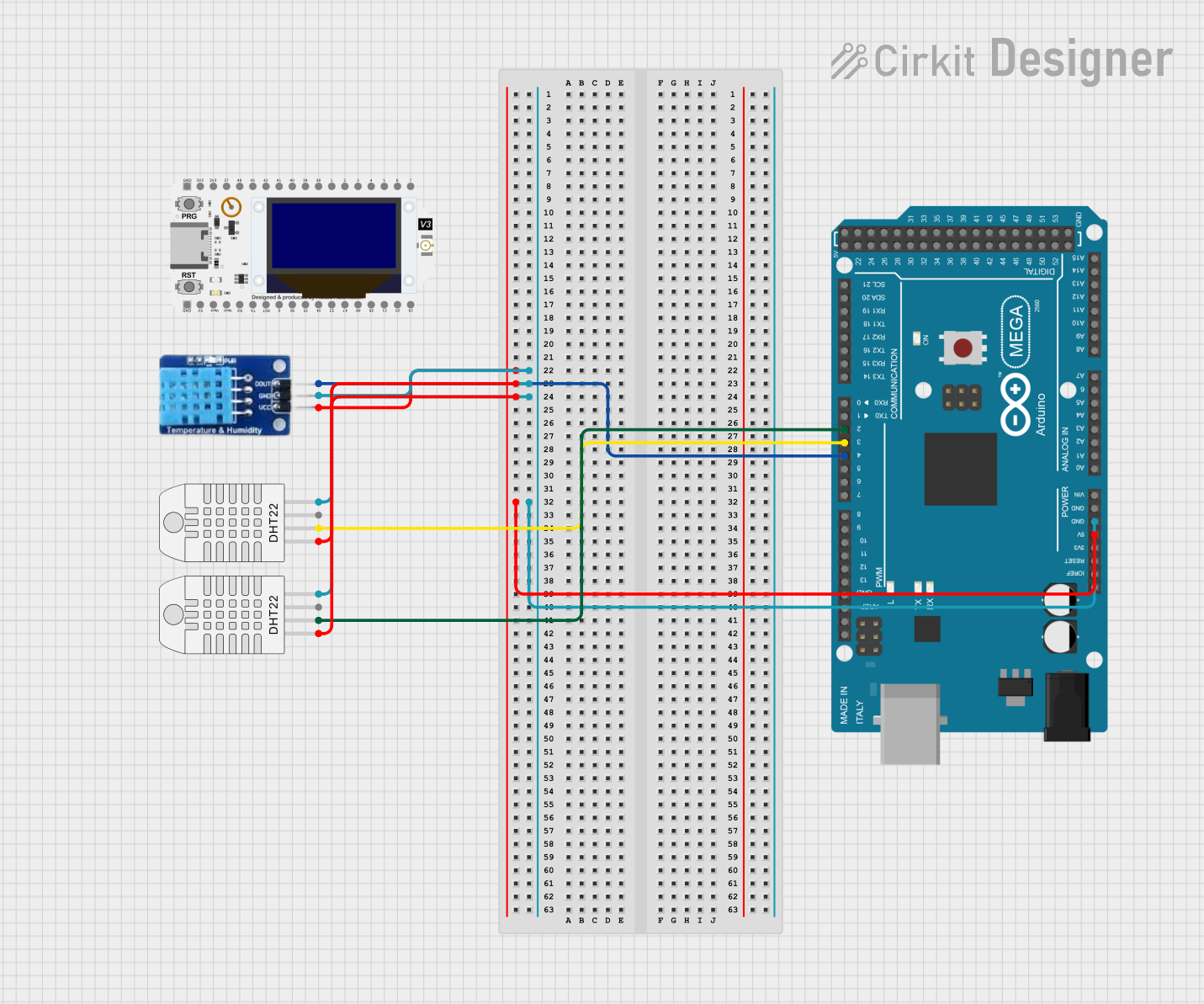
 Open Project in Cirkit Designer
Open Project in Cirkit Designer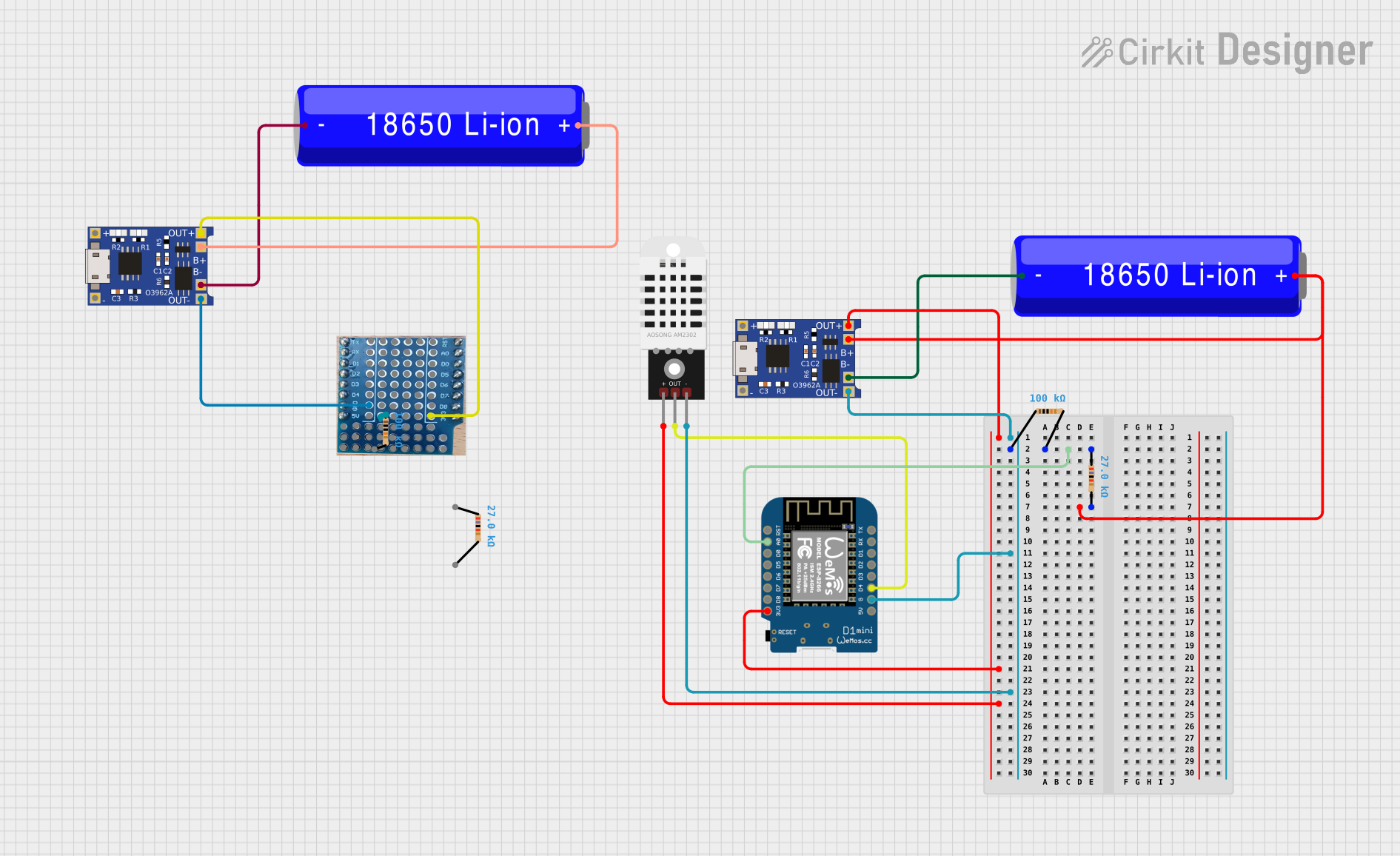
 Open Project in Cirkit Designer
Open Project in Cirkit Designer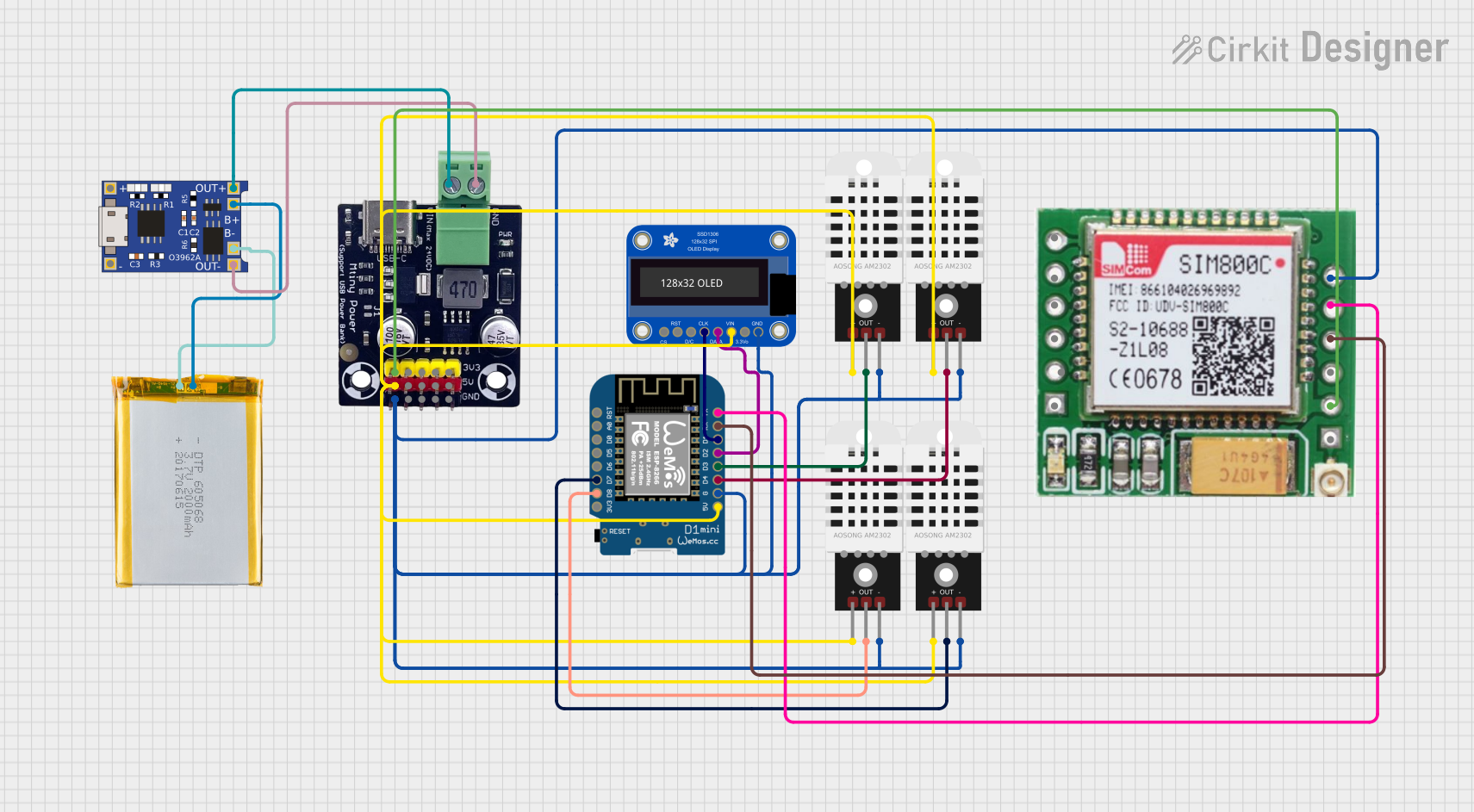
 Open Project in Cirkit Designer
Open Project in Cirkit DesignerExplore Projects Built with DHT22 (Wokwi Compatible)

 Open Project in Cirkit Designer
Open Project in Cirkit Designer
 Open Project in Cirkit Designer
Open Project in Cirkit Designer
 Open Project in Cirkit Designer
Open Project in Cirkit Designer
 Open Project in Cirkit Designer
Open Project in Cirkit DesignerCommon Applications and Use Cases
- Home and building automation for climate control
- Weather monitoring stations
- Environmental data logging
- Agricultural and soil monitoring
- HVAC systems
Technical Specifications
Key Technical Details
- Humidity Measurement Range: 0-100% RH
- Humidity Measurement Accuracy: ±2% RH
- Temperature Measurement Range: -40 to 80°C
- Temperature Measurement Accuracy: ±0.5°C
- Operating Voltage: 3.3 to 6V DC
- Max Current: 2.5mA during conversion (while requesting data)
- Sampling Rate: ≤ 0.5 Hz (once every 2 seconds)
- Interface: Digital, Single-bus
Pin Configuration and Descriptions
| Pin Number | Name | Description |
|---|---|---|
| 1 | VDD | Power supply (3.3 to 6V DC) |
| 2 | DATA | Digital data output |
| 3 | NC | Not connected (no function) |
| 4 | GND | Ground |
Usage Instructions
How to Use the DHT22 in a Circuit
- Powering the Sensor: Connect the VDD pin to a 3.3V or 5V power supply, and the GND pin to the ground.
- Data Pin Connection: Connect the DATA pin to a digital input pin on your microcontroller.
- Pull-up Resistor: A pull-up resistor (typically 10kΩ) is required between the DATA pin and VDD for reliable communication.
- Reading Data: Initiate a data reading request from your microcontroller and wait for the DHT22 to send back the temperature and humidity data.
Important Considerations and Best Practices
- Avoid placing the sensor in direct sunlight or near heat sources to prevent inaccurate readings.
- Ensure the sensor is not exposed to condensing humidity conditions.
- Allow the sensor to acclimate to the environment for accurate readings.
- Use a decoupling capacitor close to the sensor's power supply pins to stabilize voltage.
Example Code for Arduino UNO
#include "DHT.h"
#define DHTPIN 2 // Digital pin connected to the DHT sensor
#define DHTTYPE DHT22 // DHT 22 (AM2302)
DHT dht(DHTPIN, DHTTYPE);
void setup() {
Serial.begin(9600);
dht.begin();
}
void loop() {
// Wait a few seconds between measurements.
delay(2000);
// Reading temperature or humidity takes about 250 milliseconds!
float humidity = dht.readHumidity();
// Read temperature as Celsius (the default)
float temperature = dht.readTemperature();
// Check if any reads failed and exit early (to try again).
if (isnan(humidity) || isnan(temperature)) {
Serial.println("Failed to read from DHT sensor!");
return;
}
// Compute heat index in Celsius (isFahrenheit = false)
float heatIndex = dht.computeHeatIndex(temperature, humidity, false);
Serial.print("Humidity: ");
Serial.print(humidity);
Serial.print("% Temperature: ");
Serial.print(temperature);
Serial.print("°C Heat index: ");
Serial.print(heatIndex);
Serial.println("°C");
}
Troubleshooting and FAQs
Common Issues
- Inaccurate Readings: Ensure the sensor is not in an environment with rapid temperature changes and is not affected by heat sources.
- No Data: Check the wiring, especially the pull-up resistor on the data line. Ensure the power supply is stable.
- Erratic Data: Make sure there is a decoupling capacitor to filter out noise on the power supply line.
Solutions and Tips for Troubleshooting
- Sensor Not Responding: Reset the power to the sensor and ensure the microcontroller pin is correctly configured.
- Long Cable Runs: Use shielded cable for long runs to prevent signal degradation.
- Intermittent Communication: Verify that the timing of the data request is in accordance with the sensor's sampling rate.
FAQs
Q: Can the DHT22 be used outdoors? A: Yes, but it should be protected from direct sunlight and water.
Q: How long does the DHT22 last? A: With proper care, the DHT22 can last for several years, although the accuracy may degrade over time.
Q: Is calibration required for the DHT22? A: The DHT22 comes pre-calibrated from the factory. However, for critical applications, periodic recalibration may be necessary.
Q: Can I use multiple DHT22 sensors on the same microcontroller? A: Yes, each DHT22 sensor can be connected to a separate digital pin on the microcontroller. Ensure each data line has its own pull-up resistor.